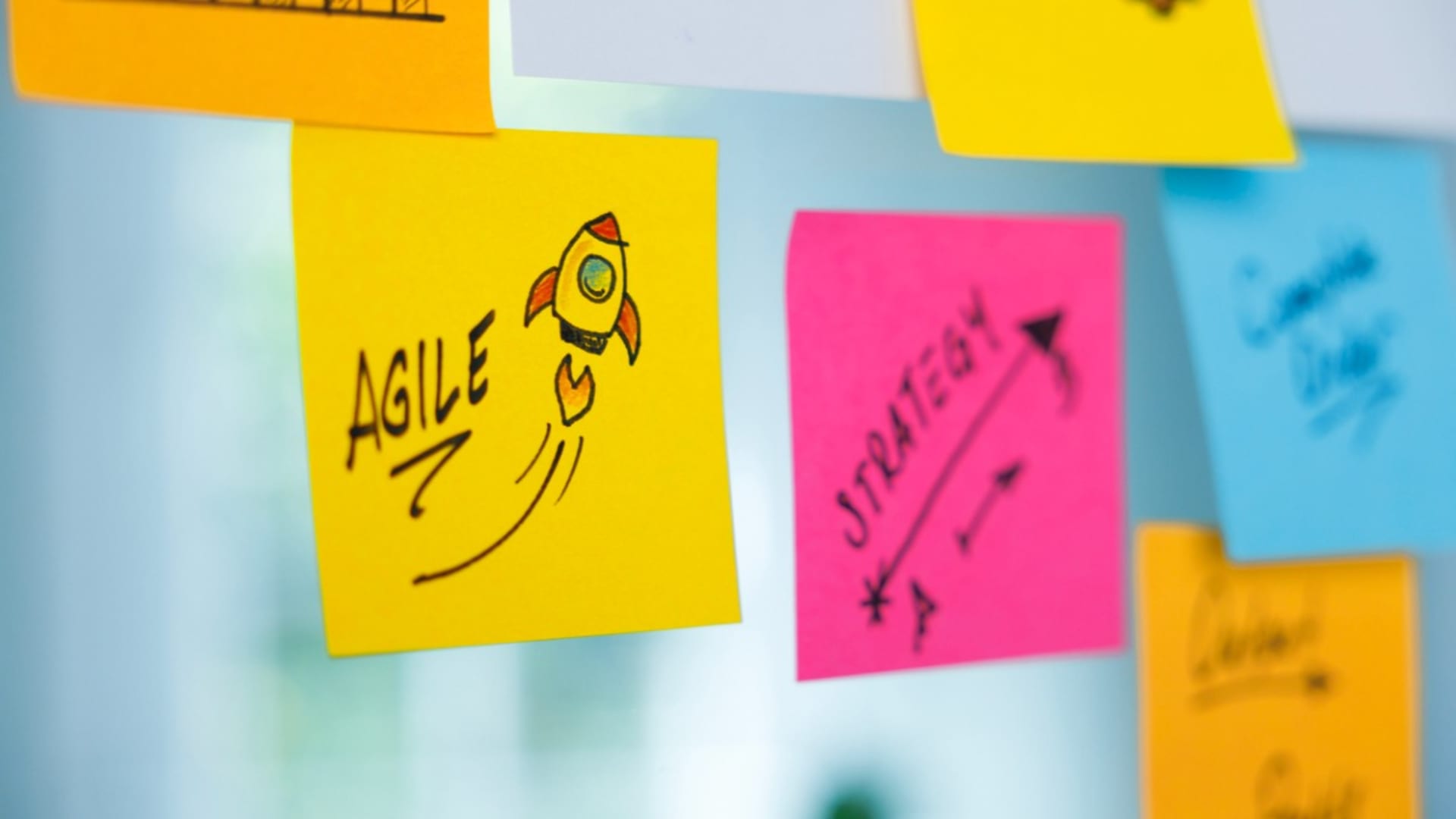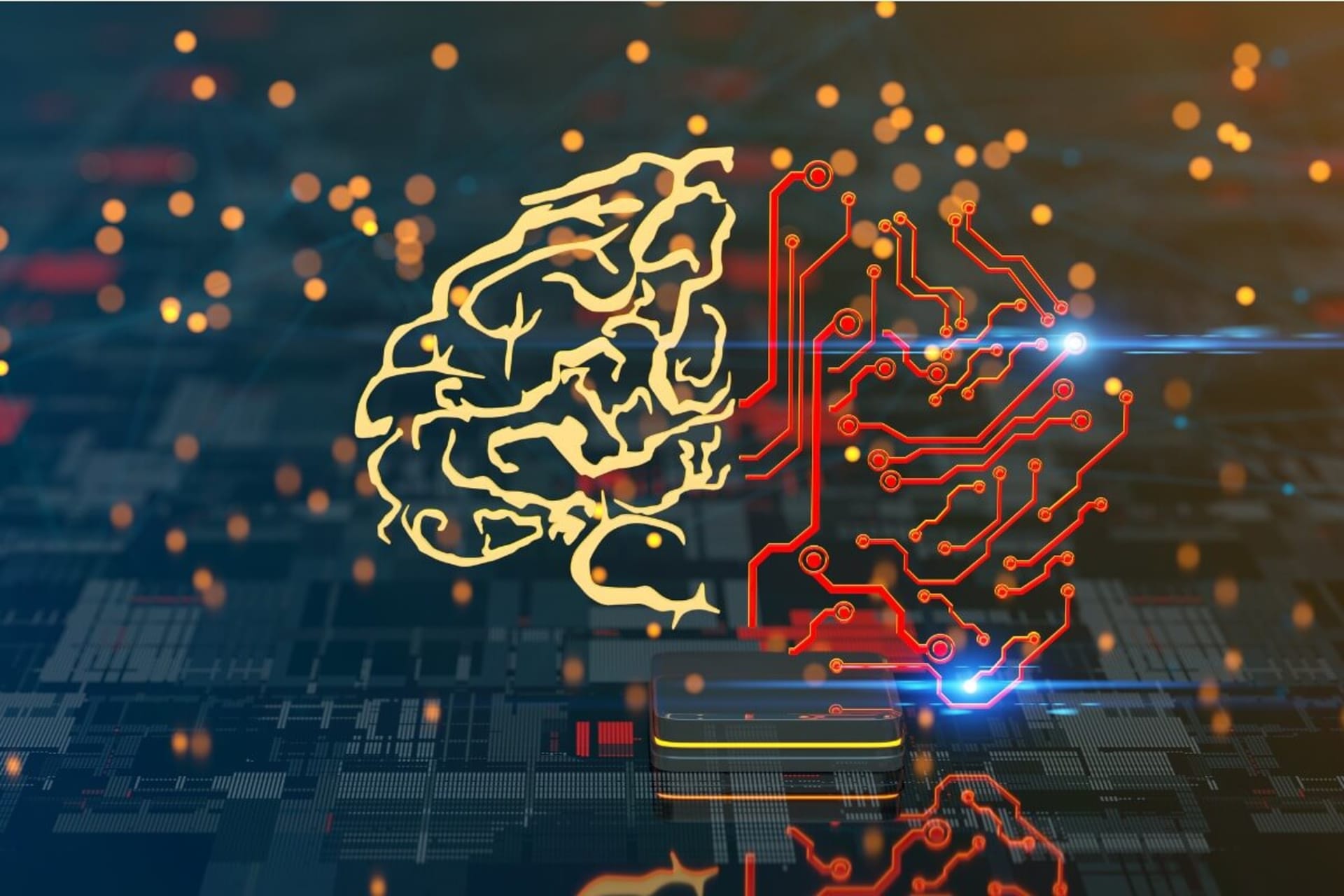Some people say that Agile and design thinking are the same. That’s not a stretch—Agile is a means of prioritizing design, not just in the products you deliver but in the processes you employ to deliver them.
At BairesDev, we rely on Agile principles to achieve flexibility, efficiency, and faster turnaround. We also know that the approach puts the consumer first and relies on their input at all turns—and that is part of our very mission.
Main Agile Methodologies
Though Agile methodologies provide the framework for implementation, having an Agile mindset is what truly drives success with these practices.
- Scrum: Scrum is the most popular Agile approach. By breaking down the project into iterations called sprints, we are able to ensure that we meet benchmarks while working toward the larger goal and improving the quality of the product along the way.
- Lean: Lean is all about speed. As the name implies, it focuses on reducing resource waste and completing the project quickly and efficiently. This is an ideal approach for projects that have tight schedules.
- Rapid Application Development (RAD): RAD, too, focuses on rapid delivery. When we apply this approach, we will begin the process with a prototype, which allows us to gather user feedback, test the product, and, ultimately, employ a speedy development process.
- Extreme Programming: XP depends on short development cycles and frequent releases. We use this Agile methodology when we’re working on projects that demand frequent communication and have changing requirements.
What Is an Agile Mindset?
Agile follows 12 principles, which comprise the Agile Manifesto. These principles lay out the framework behind the philosophy, but more than that, they explain what Agile thinking really means. They involve prioritizing customer satisfaction, an openness to changing requirements, a focus on collaboration, an eye on continuous improvement, and more.
An Agile mindset adheres to these principles and always attempts to follow them. Moreover, a company or team that follows this philosophy must adhere to it as closely as possible to adapt to changing circumstances and needs.
Principles of Agile Thinking
The Agile mindset is anchored by several key principles that guide behaviors and strategies. These principles form the core of the Agile philosophy and drive its differentiated approach compared to traditional project management. By internalizing values such as responding to change, customer collaboration, and continuous delivery, teams can achieve improved outcomes.
This is because the principles enable practitioners to effectively navigate uncertainty, satisfy user needs, and rapidly deliver working solutions. Without adaptable plans, close user feedback loops, and an emphasis on simplicity, teams using traditional linear methods often struggle with changing requirements and bloated projects.
The Agile principles empower groups to thrive in dynamic environments and build the right solutions by embracing an iterative, collaborative, and user-focused mindset. That is why understanding and applying these principles is so critical for organizations seeking to maximize their agility.
- Customer Collaboration: Continuous customer feedback and iteration are critical to delivering maximum value. By collaborating closely with end users, Agile teams can consistently meet their evolving needs.
- Responding to Change: With an emphasis on adaptability, Agile thinkers are well-equipped to accommodate unpredictable changes that arise during projects. Plans are flexible rather than rigid.
- Valuing Individuals: Agile recognizes the importance of people over processes. Strong team dynamics and engaged individuals drive success.
- Delivering Working Software: The focus is working software delivered in short cycles versus drawn-out, theoretical development. Continuous delivery provides tangible value.
- Embracing Simplicity: Agile thinking adheres to a “less is more” philosophy, eliminating unnecessary complexity at every step.
- Self-Organizing Teams: Autonomous, cross-functional teams with decision-making power can quickly adapt and produce results.
- Reflecting and Adjusting: Retrospectives fuel continuous improvement by analyzing what’s working and what needs to change.
While Agile Thinking and Agile methodologies are closely related, understanding how the broader mindset differs from specific practices allows companies to apply the principles more effectively.
How Agile Thinking Differs from Agile Methodologies
Agile Thinking represents a broad mindset, whereas Agile methodologies comprise specific software development practices. While methodologies like Scrum, Kanban, and XP provide structured processes, Agile Thinking focuses on adaptability and customer collaboration. This distinction enables the Agile mindset to extend beyond just software projects. Overall, Agile Thinking provides guiding principles for any team seeking to deliver value and thrive in dynamic environments.
Understanding the distinction between Agile thinking and its methodologies is crucial. But, what makes adopting such a mindset so valuable in the first place?
Benefits of Agile Thinking
Over the years, agile has become a standard in the software development industry, mainly because it can bring a host of benefits to anyone using it. At BairesDev, we’ve been an agile-driven company since our first day, so we don’t just know about those advantages – we guarantee them in our development process. Some of them include:
- Development teams work more efficiently: Agile methodologies boost the collaboration between our software engineers, who enjoy better communication and feedback. This allows them to focus on relevant tasks while avoiding non-essential work. Additionally, all team members are more committed to the quality of the results, as Agile sees their input as paramount throughout the process.
- Control and flexibility to reprioritize work: Agile principles are all about flexibility and iterative phases. That provides our managers with closer control over the development work while also giving them more visibility over the entire process. This is essential for better planning and execution and to reduce the time to market for the product.
- High-quality results: That’s because customer feedback is key in our agile-driven process. That way, you’ll be more closely involved with the development, which will bring the product closer to your expectations and will align it better with your overall business goals.
- Reduced risks: Agile was designed to better accommodate new needs and emerging changes. That allows us to correct course and make modifications to the original plan without jeopardizing the entire process. Also, agile is better to identify bugs throughout the development stages, meaning that your final product will be more robust and have fewer vulnerabilities.
While the benefits are numerous, it’s equally important to recognize and address the common misconceptions and challenges that arise when embracing Agile.
Challenges and Misconceptions
While the Agile mindset offers immense benefits, it also comes with misconceptions and potential pitfalls that organizations should be aware of.
Common Misconceptions
There are a few prevalent misconceptions about what it means to be Agile. For example, some assume “Agile means no documentation.” In fact, documentation is still crucial but is just leaner and more strategic. Another misconception is that “Agile is an excuse for chaos” since plans can change frequently. However, Agile still relies on structures like retrospectives and continuous delivery to prevent chaos.
Potential Challenges
Adopting Agile Thinking brings challenges too. Organizational resistance to change can impede progress as teams accustomed to traditional methods struggle with new practices. There can also be misapplication of Agile principles if the mindset is not fully understood, leading to suboptimal results. For example, self-organizing teams can deteriorate into a lack of accountability if not properly balanced with principles like continuous delivery.
The key is to anticipate these hurdles, educate teams on the nuances of Agile Thinking, and implement changes incrementally. With proper expectation setting and training, organizations can circumvent common pitfalls on their Agile journey. An incremental rollout focused on principles like feedback and adaptation can build confidence and momentum for larger-scale adoption.
Real-world Examples of Agile Thinking in Action
Challenges, when understood, can be mitigated. Many organizations have not only navigated these challenges but thrived with Agile thinking, as the following examples illustrate.
- Spotify: The music streaming giant is renowned for pioneering Agile organizational models like squads, tribes, chapters, and guilds. It faced challenges changing from a traditional waterfall development approach but saw faster release cycles and autonomy improve results.
- Mozilla: The open-source developers of the Firefox browser switched to Agile methods in 2008 after struggling with traditional long-term roadmaps. Short sprints and cross-functional teams enabled more flexibility. Bug backlogs were reduced by over 50% in the first 5 years.
- Toyota: While pioneering Lean manufacturing, Toyota adopted Agile values like eliminating waste and amplifying learning. Continuously improving its famous production system requires adaptability to changing constraints.
- ING: The Netherlands-based bank underwent an Agile transformation in 2015 focused on self-managing teams and a growth mindset. By being open to change, 80% of employees now feel empowered to deliver better customer experiences faster.
- Zappos: Known for their customer service, Zappos uses practices like team rituals and open feedback loops to support rapid learning. An emphasis on servant leadership and personal growth matches their people-first values.
As these examples show, Agile Thinking can transform outcomes across industries by prioritizing adaptability and user-centricity over rigid processes. The improvements often outweigh the challenges for teams willing to embrace the mindset shift. While these organizations showcase Agile’s real-world potential, fostering such a mindset requires deliberate efforts. Here are some best practices to ensure that transition is effective.
Best Practices for Fostering an Agile Mindset
Agile thinking goes beyond just practices – it’s a comprehensive mindset of adaptability, collaboration, and customer focus that originated in software development. This holistic philosophy emphasizes responding to change, continuous learning, and ongoing value delivery over rigidly following plans. With implications across fields, this mindset helps navigate unpredictability in software and business alike through its emphasis on adaptability over preset processes.
With these foundational principles in mind, let’s delve into actionable steps to truly embed this Agile mindset within an organization.
The main features that are necessary for this mindset are:
- Continuous Learning: Relentlessly gaining new knowledge and skills to stay current.
- Adaptability: Quickly adjusting strategies without derailing progress.
- Teamwork: Harnessing collective expertise through collaboration.
- Communication: Ensuring open, clear, timely information exchange.
- Critical Thinking: Analyzing issues, weighing solutions, executing optimal path.
- Decisiveness: Making informed choices quickly to maintain momentum.
- Positivity: Fostering optimism, resilience, and motivation.
- Efficiency: Maximizing output, minimizing waste.
- Simplicity: Focusing on essentials, eliminating complexity.
- Customer Centricity: Consistently meeting or exceeding needs.
- Reflection: Regularly assessing strategies and performance.
- Design Thinking: Innovating via empathy and user focus.
- Growth Mindset: Proactively improving through effort
Equipped with this understanding, we can now explore what it means to cultivate an Agile mindset.
How To Adopt an Agile Mindset
Agile usually streamlines the software development process, but teams must adapt to the mindset to fully reap the rewards of the approach.
First, businesses must attain company buy-in. They should educate their team members on the benefits of Agile thinking and explain how it will foster better collaboration and, ultimately, superior results. They should also explore how the various skill sets of their team members will contribute to the project.
Agile also requires planning. Businesses should consider how they will roll out projects following the approach and successfully train team members. They also need to recognize that, as with any new concept, it will take some time for team members to adjust to this new philosophy.
To fully adopt an Agile mindset, teams should focus on reconceptualizing their way of thinking about software development. They must be open to change and willing to embrace the concepts of communication, collaboration, innovation, and creativity.
There are also some concrete ways to foster Agile adoption. For example, teams should hold retrospectives—short meetings to debrief throughout the software development process. They should also make every effort to keep all stakeholders informed at each stage, so no one is left out of the loop.






